#Royal Swedish Opera
Text

A NIGHT AT THE OPERA by KAROLINA HENKE (Sweden 🇸🇪)
📍 THE ROYAL SWEDISH OPERA
The Royal Swedish Opera includes the Royal Ballet, Young at the Opera, the Royal Swedish Orchestra and the Royal Swedish Opera Chorus.
24 notes
·
View notes
Text
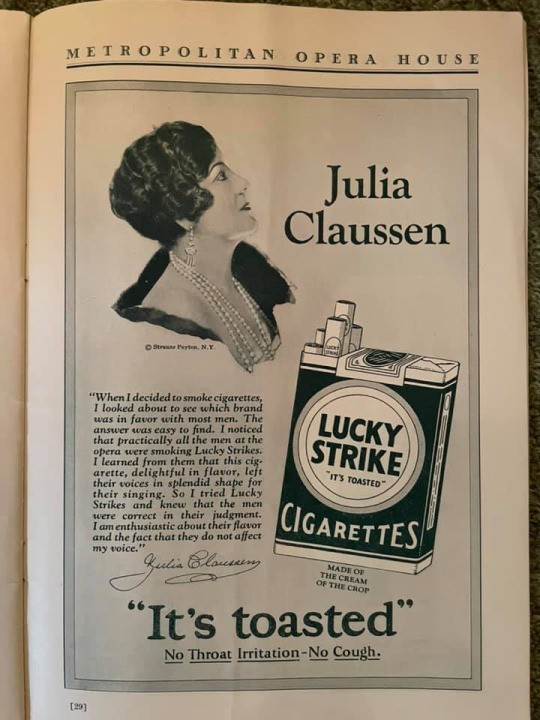
Today a curiosity from 1928 in Program of the Metropolitan Opera New York.
Julia Claussen (1879-1941) was a Swedish opera singer who sang from 1917-1932. There she sung 15 great opera roles
It would be unthinkable today to inspire an opera singer for a cigarette advertisement.
#classical music#opera#music history#bel canto#composer#classical composer#aria#classical studies#maestro#chest voice#Julia Claussen#mezzo-soprano#Royal Swedish Opera#Covent Garden#Royal Opera House#Carnegie Hall#Metropolitan Opera#Met#classical musician#classical musicians#classical voice#classical art#classical history#history of music#historian of music#musicians#musician#diva#prima donna
4 notes
·
View notes
Text

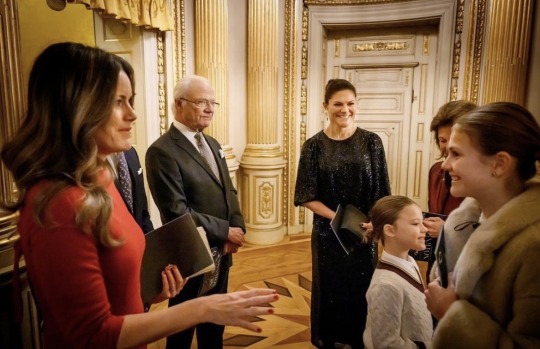


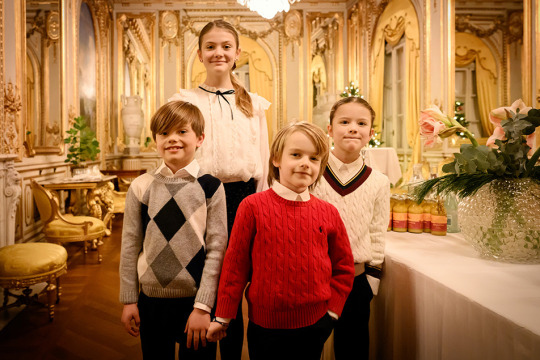
17th December 2023 // The King, Queen, Crown Princess Victoria and her two children, and Princess Sofia and her two oldest sons were seen on an evening out at the Royal Opera in Stockholm, watching The Nut Cracker.
#swedish royal family#crown princess victoria#my upload#king carl xvi gustaf#king carl gustaf#princess estelle#queen silvia#prince oscar#princess sofia#prince alexander#prince gabriel#2023#December 2023#opera
104 notes
·
View notes
Text

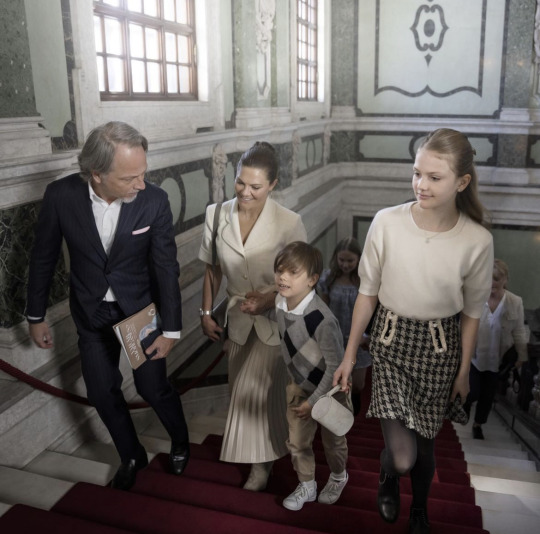

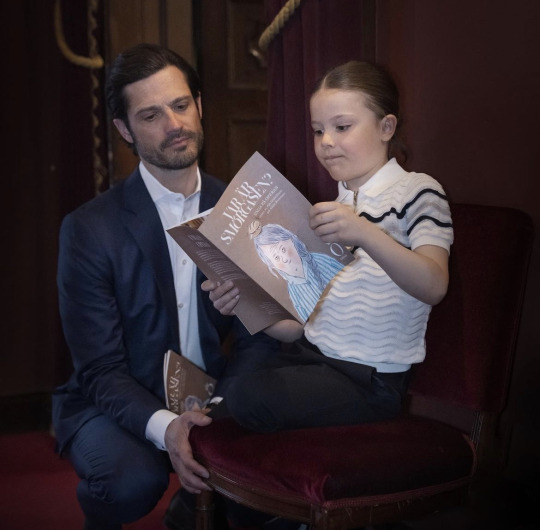

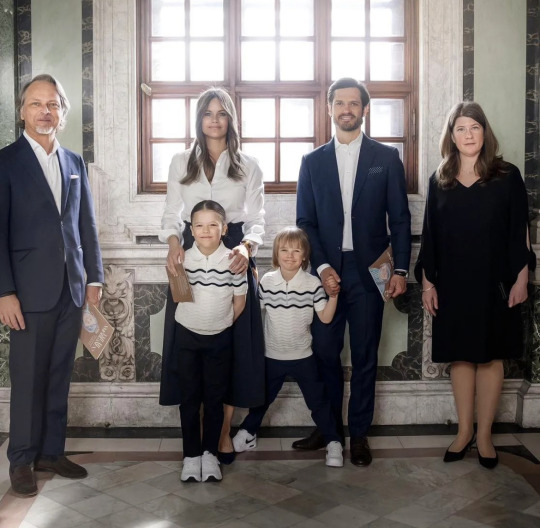

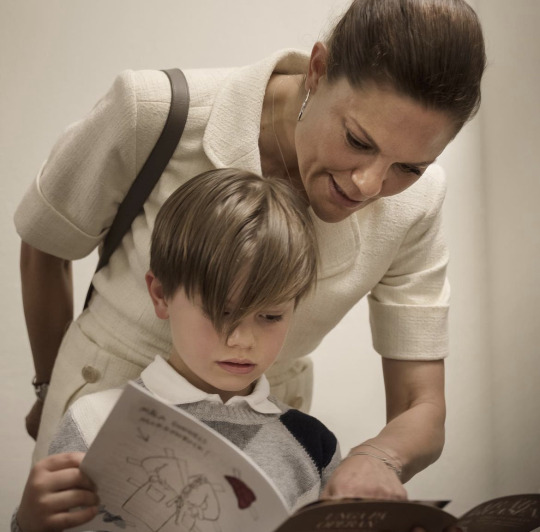

the swedish royals in palaces
#not all of these pics are from the opera hehehe#does that count as cheating? lol#royal series#my edit#swedish royal family#scandinavian royalty#moodboard#crown princess victoria#prince daniel#princess estelle#prince oscar#prince carl philip#princess sofia#prince gabriel#prince alexander#royal aesthetics#royalcore#royaltyedit
37 notes
·
View notes
Text
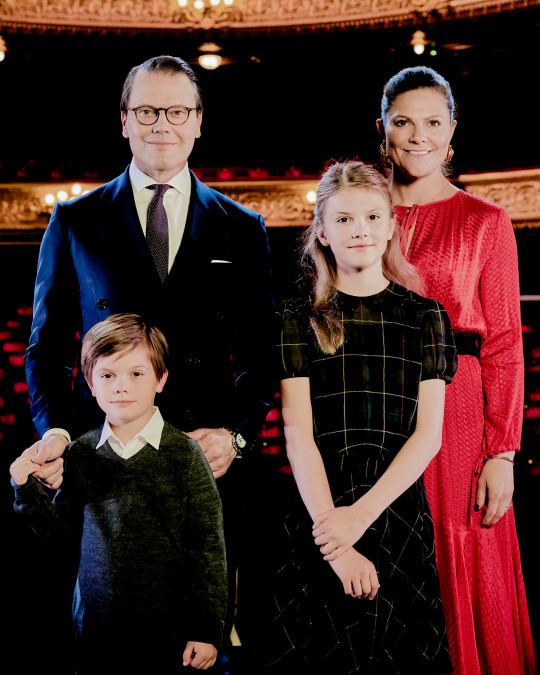
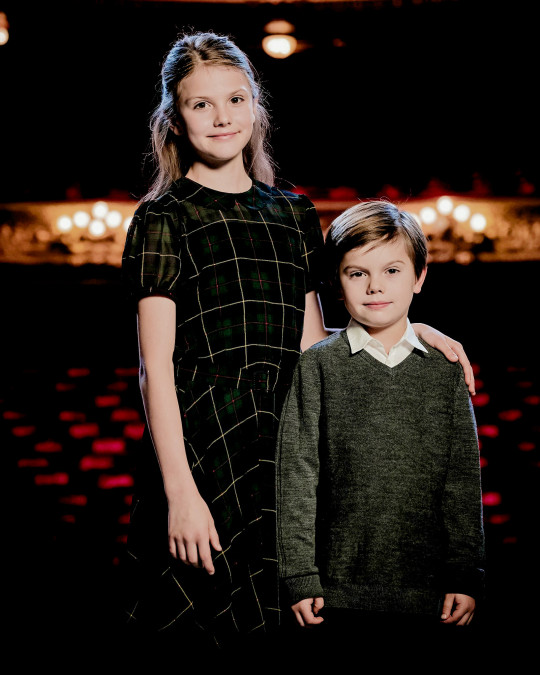
Crown Princess Victoria of Sweden, Prince Daniel of Sweden, Princess Estelle of Sweden and Prince Oscar of Sweden visit the Royal Opera to watch a performance of the ballet “Cinderella”, in Stockholm, Sweden -December 19th 2022.
📷 : Sören Vilks/Kungliga Operan.
#crown princess victoria#prince daniel#princess estelle#prince oscar#prince oscar of sweden#swedish royal family#sweden#2022#december 2022#royal opera#royal opera stockholm#cinderella#royal children#my edit
45 notes
·
View notes
Text
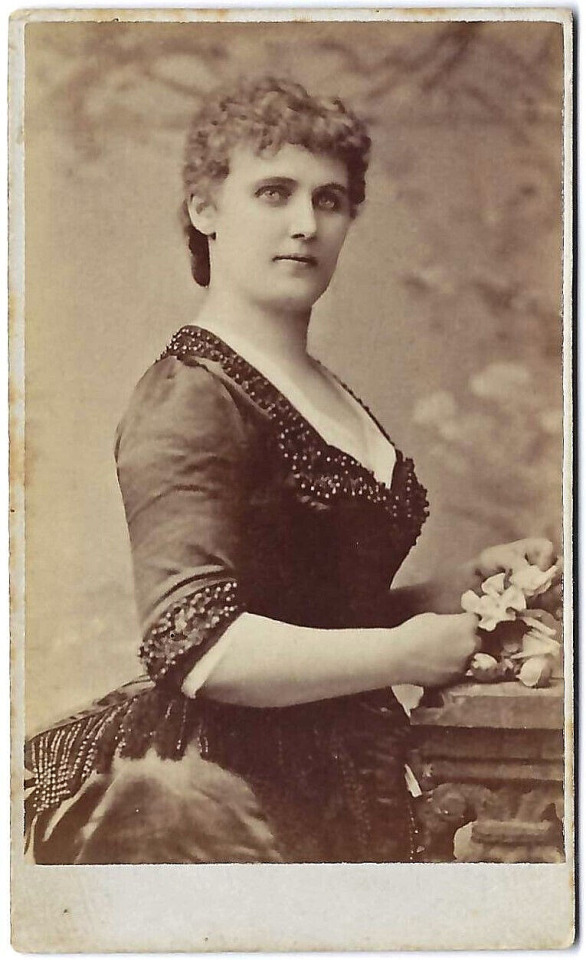
#christina nilsson#christine nilsson#christine daaé#opera#singer#bel canto#soprano#dramatic coloratura soprano#the nightingale#swedish nightingale#swedish opera singer#the phantom of the opera#le fantôme de l'opéra#gaston leroux#paris opera#her majesty’s theatre#drury lane#covent garden#royal albert hall#royal opera house#the metropolitan opera#mariinsky theatre#photography#classical singer#classical singing#classical music#music history#classical studies#diva#aria
14 notes
·
View notes
Text

Royal Swedish Opera, Stockholm, Sweden.
Photo by David Leventi
#art#photography#nature#landscape#aesthetic#portrait#painting#contemporary art#architecture#abstract#sweden#royal opera house#curators on tumblr
436 notes
·
View notes
Text

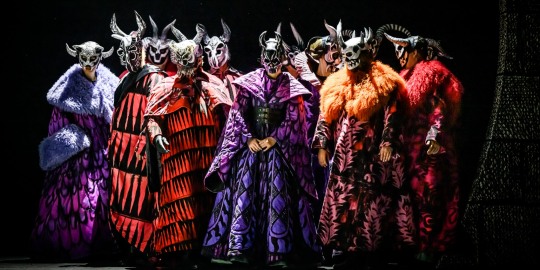
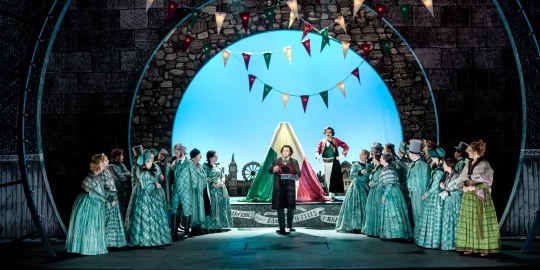

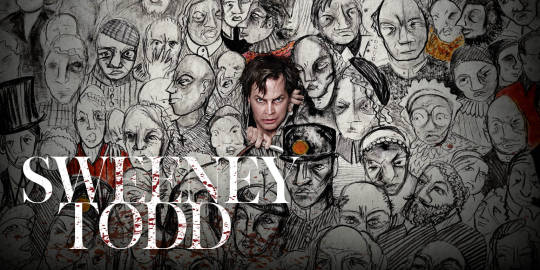
Sweeney Todd at the Royal Swedish Opera, 2023.
Photo: Sören Vilks/Annika Berglund.
#sweeney todd#stephen sondheim#musicals#sweeney todd the demon barber of fleet street#musical theater#this SLAPPED i don't remember when i last saw such a visually striking show
719 notes
·
View notes
Text
The Catalan authors who were kept out of the Nobel Literature Prize for being Catalan
Did you know that there have been a handful of Catalan writers who were candidates to win the Nobel Literature Prize, but because of Spanish interference they never did?
The Nobel Prize discloses its debate and reasoning process 50 years after each edition. This means that we already know the details of what happened in the earliest editions of this Prize, which was started in 1901.
The name of the Catalan play-writer Àngel Guimerà (author of Marta of the Lowlands, Mar i cel, La filla del mar...), whose works have been translated to many languages and played all around Europe and the Americas, with many film and opera adaptations, sounded often in the Nobel committee. He was presented as a candidate to win the Nobel Prize 17 times in a row, since 1907 until his death in 1924. In the editions of 1917 and 1919, many were convinced he would win. However, the declassified documents show why he didn't: as written by the man who was then president of the Nobel Committee, Haralg Härne, Guimerà wasn't given the prize "to avoid hurting the national pride of the Spanish". In 1919, Härne writes that the objective of the Nobel Prize is to promote peace and thus to award Guimerà and show support for a minority culture would be to encourage internal conflict (🤦). The Academy decided that they couldn't give a prize to Guimerà "before awarding another writer who expresses himself in the most ancient noble language of the country" (weird way to mean "the official language", aka Spanish, because they surely didn't mean Basque). In summary, if a Catalan is to be considered, he must always be second to a Spanish man. Even when the Catalan is, in the words of the Nobel Academy, "the most eminent writer of our times", he can never be considered an equal, always must be behind.
Àngel Guimerà wrote in the Catalan language, which was discriminated against by Spanish and considered an enemy by the Spanish government and much of Spanish society. Guimerà was a firm defender of the right to use the Catalan language and that nobody should be forced to speak the imperial languages instead of their own, and was involved with the political movement for the rights of Catalan people. For this reason, every time the famous Swedish academy was considering Guimerà, the Spanish Royal Academy of Language (RAE) fought it with all its might. Nowadays, Guimerà's theatre plays continue to move thousands of spectators every year.
The same happened again with the poet Josep Carner. In the 1960s, Josep Carner was on exile, because he was a Catalan poet writing in Catalan and who stood against the fascist dictatorship of Spain, which persecuted the Catalan language and identity. Famous writers from around the world, including T. S. Eliot, François Mauriac, Giuseppe Ungaretti and Roger Caillois, supported Josep Carner's candidacy to win the Nobel, but the Spanish Government did everything possible to obstruct it. We don't know if Carner would have won or not, but he was deprived of even trying because of the Spanish government's hatred of Catalan.
Something similar seems to have happened between the 1970s and 1990s to three other Catalan poets: Salvador Espriu, J. V. Foix, and Miquel Martí i Pol, where they did not get any support from the Spanish authorities, so we don't know how it would have ended up.
Another example of what it means to have a state actively working against you because of bigotry against your cultural group.
Sources: book Det litterära Nobelpriset by the president of the Nobel Committee Kjell Espmarck, Pep Antoni Roig (El Nacional), Joan Lluís-Lluís (El Punt Avui), and Jordi Marrugat (Institut Ramon Llull).
#literatura#arts#història#àngel guimerà#josep carner#literature#books#reading#nobel prize#nobel literature prize#catalanophobia#catalanofòbia#catalan#cultures#writing#human rights#minority languages#1900s#history
58 notes
·
View notes
Text
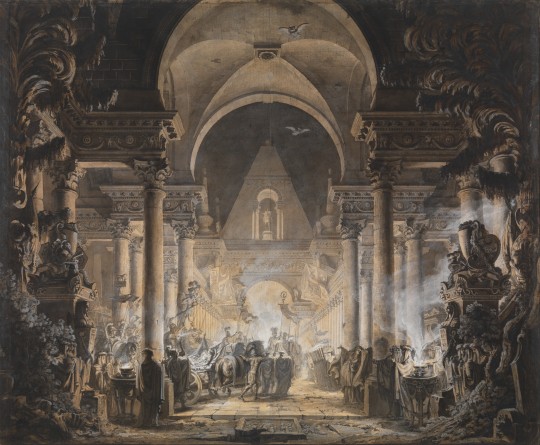
The Tomb of Agamemnon by Louis-Jean Desprez. French, c. 1787. Black ink and gray washes, heightened with white gouache, on beige paper. In the collection of the Metropolitan Museum of Art.
Description from the Met:
Trained as an architect, the French artist Desprez was appointed by King Gustav III of Sweden in 1784 as the head stage designer for the Royal Opera in Stockholm. This drawing relates to the sets Desprez made for the Swedish opera Electra, which premiered at Drottningholm Castle on July 22, 1787. The scene of Agamemnon’s interment is in the prologue, which opens with Electra and Orestes plotting to avenge their father’s murder. Desprez’s rendering is cloaked in gloom, with torches and censers dramatically lighting the architecture from below.
#neoclassicism#Agamemnon#Louis-Jean Desprez#Louis Jean Desprez#stage design#theater design#Electra#opera#French#art#works on paper#mythology#pen and ink#gouache
242 notes
·
View notes
Text
Opera on YouTube
I've shared links to complete opera performances before, but I love to share them, so I thought I'd make a few masterposts.
These list are by no means the only complete filmed performances of these operas on YouTube, but I decided that ten links for each opera was enough for now.
By the way, some of the subtitles are just a part of the video, while others require you to click CC to see them.
Die Zauberflöte (The Magic Flute)
Hamburg Philharmonic State Opera, 1971 (Nicolai Gedda, Edith Mathis, William Workman, Christina Deutekom, Hans Sotin; conducted by Horst Stein; English subtitles)
Ingmar Bergman film, 1975 (Josef Köstlinger, Irma Urrila, Håkan Hagegård, Birgit Nordin, Ulrik Cold; conducted by Eric Ericson; sung in Swedish; English subtitles)
Salzburg Festival, 1982 (Peter Schreier, Ileana Cotrubas, Christian Bösch, Edita Gruberova, Martti Talvela; conducted by James Levine; Japanese subtitles)
Bavarian State Opera, 1983 (Francisco Araiza, Lucia Popp, Wolfgang Brendel, Edita Gruberova, Kurt Moll; conducted by Wolfgang Sawallisch; English subtitles)
Metropolitan Opera, 1991 (Francisco Araiza, Kathleen Battle, Manfred Hemm, Luciana Serra, Kurt Moll; conducted by James Levine; English subtitles)
Paris Opera, 2001 (Piotr Beczala, Dorothea Röschmann, Detlef Roth, Desirée Rancatore, Matti Salminen; conducted by Ivan Fischer; no subtitles)
Royal Opera House, Covent Garden, 2003 (Will Hartman, Dorothea Röschmann, Simon Keenlyside, Diana Damrau, Franz Josef Selig; conducted by Colin Davis; no subtitles) – Act I, Act II
La Monnaie, Brussels, 2005 (Topi Lehtipuu, Sophie Karthäuser, Stephan Loger, Ana Camelia Stefanescu, Harry Peeters; conducted by René Jacobs; French subtitles)
Kenneth Branagh film, 2006 (Joseph Kaiser, Amy Carson, Benjamin Jay Davis, Lyubov Petrova, René Pape; conducted by James Conlon; sung in English)
San Francisco Opera, 2010 (Piotr Beczala, Dina Kuznetsoca, Christopher Maltman, Erika Miklósa, Georg Zeppenfeld; conducted by Donald Runnicles; English subtitles)
La Traviata
Mario Lanfrachi studio film, 1968 (Anna Moffo, Franco Bonisolli, Gino Bechi; conducted by Giuseppe Patané; English subtitles)
Glyndebourne Festival Opera, 1987 (Marie McLaughlin, Walter MacNeil, Brent Ellis; conducted by Bernard Haitink; Italian and Portuguese subtitles)
Teatro alla Scala, 1992 (Tiziana Fabbricini, Roberto Alagna, Paolo Coni; conducted by Riccardo Muti; English subtitles)
Royal Opera House, Covent Garden, 1994 (Angela Gheorghiu, Frank Lopardo, Leo Nucci; conducted by Georg Solti; Spanish subtitles)
Teatro Giuseppe Verdi, 2003 (Stefania Bonfadelli, Scott Piper, Renato Bruson; conducted by Plácido Domingo; Spanish subtitles)
Salzburg Festival, 2005 (Anna Netrebko, Rolando Villazón, Thomas Hampson; conducted by Carlo Rizzi; no subtitles)
Los Angeles Opera, 2006 (Renée Fleming, Rolando Villazón, Renato Bruson; conducted by James Conlon; English subtitles)
Opera Festival St. Margarethen, 2008 (Kristiane Kaiser, Jean-Francois Borras, Georg Tichy; conducted by Ernst Märzendorfer; English subtitles)
Teatro Real di Madrid, 2015 (Ermonela Jaho, Francesco Demuro, Juan Jesús Rodríguez; conducted by Renato Palumbo; English subtitles)
Teatro Massimo, 2023 (Nino Machiadze, Saimir Pirgu, Roberto Frontali; conducted by Carlo Goldstein; no subtitles)
Carmen
Herbert von Karajan studio film, 1967 (Grace Bumbry, Jon Vickers; conducted by Herbert von Karajan; English subtitles)
Vienna State Opera, 1978 (Elena Obraztsova, Plácido Domingo; conducted by Carlos Kleiber; English Subtitles)
Francisco Rosi film, 1982 (Julia Migenes, Plácido Domingo; conducted by Lorin Maazel; English subtitles)
Metropolitan Opera, 1987 (Agnes Baltsa, José Carreras; conducted by James Levine; English subtitles)
London Earls Court Arena, 1989 (Maria Ewing, Jacque Trussel; conducted by Jaques Delacote; English subtitles)
Royal Opera House, Covent Garden, 1991 (Maria Ewing, Luis Lima; conducted by Zubin Mehta; English subtitles) – Acts I and II, Acts III and IV
Arena di Verona, 2003 (Marina Domashenko, Marco Berti; conducted by Alain Lombard; Italian subtitles)
Royal Opera House, Covent Garden, 2006 (Anna Caterina Antonacci, Jonas Kaufmann; conducted by Antonio Pappano; English subtitles) – Acts I and II, Acts III and IV
Metropolitan Opera, 2010 (Elina Garanca, Roberto Alagna; conducted by Yannick Nézet-Séguin; English subtitles) – Acts I and II, Acts III and IV
Opéra-Comique, 2023 (Gaëlle Arquez, Frédéric Antoun; conducted by Louis Langrée; English subtitles)
La Bohéme
Franco Zeffirelli studio film, 1965 (Mirella Freni, Gianni Raimondi; conducted by Herbert von Karajan; English subtitles)
Metropolitan Opera, 1977 (Renata Scotto, Luciano Pavarotti; conducted by James Levine; no subtitles)
Teatro alla Scala, 1979 (Ileana Cotrubas, Luciano Pavarotti; conducted by Carlos Kleiber; no subtitles)
Opera Australia, 1993 (Cheryl Barker, David Hobson; conducted by Julian Smith; Brazilian Portuguese subtitles)
Teatro Regio di Torino, 1996 (Mirella Freni, Luciano Pavarotti; conducted by Daniel Oren; Italian subtitles)
Teatro alla Scala, 2003 (Cristina Gallardo-Domâs, Marcelo Alvarez; conducted by Bruno Bartoletti; Spanish subtitles)
Zürich Opera House, 2005 (Cristina Gallardo-Domâs, Marcello Giordani; conducted by Franz Welser-Möst; no subtitles)
Robert Dornhelm film, 2009 (Anna Netrebko, Rolando Villazón; conducted by Bertrand de Billy; no subtitles)
Opera Australia, 2011 (Takesha Meshé Kizart, Ji-Min Park; Shao-Chia Lü; no subtitles)
Sigulda Opera Festival, 2022 (Maija Kovalevska, Mihail Mihaylov; conducted by Vladimir Kiradjiev; English subtitles)
#opera#youtube#complete performances#die zauberflöte#the magic flute#la traviata#carmen#la boheme#wolfgang amadeus mozart#giuseppe verdi#georges bizet#giacomo puccini
24 notes
·
View notes
Text

Nathalie Nordquist and Jonatan Davidsson - Royal Swedish Ballet (Kungliga Operan är Sveriges nationalscen för opera och balett)
#Nathalie Nordquist#Jonatan Davidsson#ballet couples#Royal Swedish Ballet#Kungliga Operan#ballerino#ballerina#bailarín#danseur#dancer#tänzer#ballet#dance#boys of ballet#ballet men
11 notes
·
View notes
Text
Carolina Östberg was one of the most famous and beloved singers of all on the Swedish opera stage during the last decades of the 1800s.
Carolina Östberg was born in Stockholm in 1853. She was the daughter of the master barber surgeon Johan Ludvig Östberg and Beata Ulrika Wallberg. Even as a child, Carolina Östberg showed that she was naturally musically gifted. It was however not until she was about 16, and accepted as a pupil at the Royal Swedish Academy of Music, that she was given the opportunity to develop this talent further. Carolina Östberg studied Christina Nilsson’s and Zelia Trebelli’s singing methods thoroughly when they visited Sweden, but she considered that she had her singing teacher, Professor Joseph Günther, to thank for her highly developed singing technique.
After three years of studies, she made her stage debut at the Royal Theatre, nowadays the Royal Opera in Stockholm, when she entered the great stage in the role of Anna in the opera Der Freischütz, on 15 December 1873. The critics wrote that this unusually talented debutante had a soprano voice with a fresh, clear and pure timbre and that she also showed evidence of careful training in coloratura. The year after, she had yet another achievement in the male role Carlo Broschi in Daniel Auber’s opera La Part du Diable, and was given a contract. During her three years at the Royal Theatre, she created important Mozart roles such as, among others, Susanna in Le Nozze di Figaro and Papageno and one of the genies in Der Zauberflöte. For each new performance, Carolina Östberg won ever greater recognition from critics and audiences alike.
When her contract ended in 1877, Carolina Östberg planned to educate herself further in St Petersburg. However, the journey was cancelled since instead she married the wholesale dealer Moritz Horwitz the year after, and chose to leave the stage to the audience’s great disappointment, apparently permanently. The prevailing period of depression in Sweden meant however that her husband’s income was very meagre. Carolina Östberg decided to return to the stage once more. Her unexpected return in 1879 as the title role in Franz von Suppé’s operetta Boccaccio on the stage of Nya teatern was such a roaring success that it created total Boccaccio-fever in the capital. The acclaimed performance sold out time and again and Carolina Östberg was paid a staggering fee of 100 kronor per evening. Her engagement at Nya teatern lasted until 1885 and she played the main role in among other works Charles Lecocq’s opera Le Petit Duc, Madame Favart by Offenbach, and Charles Grisart’s Les Poupées de l’Infante. During her years at the theatre, Carolina Östberg gave guest performances at many other theatres, for example in Denmark in 1880, Germany and the Netherlands in 1882—1883 and Norway in 1885.
When Carolina Östberg once again was given a contract at the Royal Theatre in 1886, this was considered a triumph for the audience who had demanded her return to the great dramatic stage for a very long time. Apart from a break for touring America in 1892—1894, Carolina Östberg belonged to the permanent ensemble at the Royal Theatre until 1906 when she resigned to work as a private singing teacher, an enterprise that she had carried on parallel to the theatre for several years.
In 1897, Carolina Östberg was elected to be a member of the Royal Swedish Academy of Music. She was awarded the medal Litteris et Artibus in 1891 and on King Oscar II’s birthday in 1900, Carolina Östberg received from his hand the unusual medal Litteris et Artibus decorated with diamonds. Carolina Östberg was a member of Idun’s women’s academy for a while, along with – among others – Selma Lagerlöf, Agda Montelius and Karolina Widerström.
Carolina Östberg died on 27 February 1924. She lies buried at the Northern Cemetery in Solna. Her voice has been preserved on nine gramophone recordings from 1905.
#classical music#opera#music history#bel canto#composer#classical composer#aria#classical studies#maestro#chest voice#Carolina Östberg#singing teacher#Royal Swedish Opera#Le Nozze di Figaro#Wolfgang Amadeus Mozart#The Marriage of Figaro#soprano#classical musician#classical musicians#classical history#history of music#historian of music#musician#musicians#diva#prima donna#opera history
6 notes
·
View notes
Text

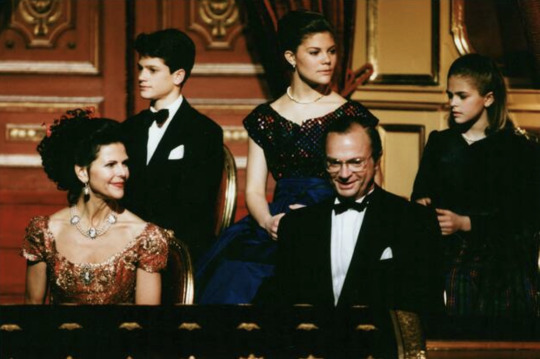
23rd December 1993 // The Swedish royal family attended a tribute concert at the Royal Swedish Opera to mark Queen Silvia's 50th birthday
#queen silvia#king carl gustaf#king carl xvi gustaf#princess madeleine#prince carl philip#crown princess victoria#Swedish royal family#1993#my upload
47 notes
·
View notes
Text
THIS DAY IN GAY HISTORY
based on: The White Crane Institute's 'Gay Wisdom', Gay Birthdays, Gay For Today, Famous GLBT, glbt-Gay Encylopedia, Today in Gay History, Wikipedia, and more … April 2


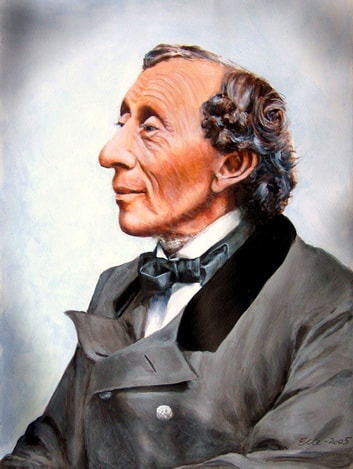
1805 – Born: Hans Christian Andersen, often referred to using the initials H. C. (d.1875). Andersen was a Danish author, fairy tale writer, and poet noted for his children's stories. These include "The Steadfast Tin Soldier", "The Snow Queen", "The Little Mermaid", "Thumbelina", "The Little Match Girl", and "The Ugly Duckling".
During his lifetime he was acclaimed for having delighted children worldwide, and was feted by royalty. His poetry and stories have been translated into more than 150 languages. They have inspired motion pictures, plays, ballets, and animated films.
Hans Christian Andersen was born in the town of Odense, Denmark. The family was associated with Danish royalty, through employment or trade. Whatever the reason, King Frederick VI took a personal interest in him as a youth and paid for a part of his education. Later, Hans Christian was forced to support himself. He worked as a weaver's apprentice and, later, for a tailor. At 14, he moved to Copenhagen to seek employment as an actor. Having an excellent soprano voice, he was accepted into the Royal Danish Theatre, but his voice soon changed, and he began to focus on writing instead.
Jonas Collin, who, following a chance encounter with Andersen, immediately felt a great affection for him, sent him to a grammar school in Slagelse, covering all his expenses. Andersen had already published his first story, The Ghost at Palnatoke's Grave, in 1822. Though not a keen student, he also attended school at Elsinore until 1827.
He later said his years in school were the darkest and most bitter of his life. At one school, he lived at his schoolmaster's home. There he was abused in order "to improve his character", he was told. He later said the faculty had discouraged him from writing in general, causing him to enter a state of depression.
In 1833 he received a small traveling grant from the King, enabling him to set out on the first of many journeys through Europe.
It was during 1835 that Andersen published the first installment of his immortal Fairy Tales. More stories, completing the first volume, were published in 1836 and 1837. The quality of these stories was not immediately recognized, and they sold poorly.
His true genius was however proved in the miscellany the Picture-Book without Pictures (1840). The fame of his fairy tales had grown steadily; a second series began in 1838 and a third in 1845. Andersen was now celebrated throughout Europe, although his native Denmark still showed some resistance.
In June 1847, Andersen paid his first visit to England and enjoyed social success. The Countess of Blessington invited him to her parties where intellectual and famous people could meet, and it was at one party that he met Charles Dickens for the first time. They shook hands and walked to the veranda, much joy to Andersen, and he wrote of it in his diary.
In Andersen's early life, his private journal records his failure to have sexual relations. Andersen often fell in love with unattainable women. The most famous of these was the opera soprano Jenny Lind. One of his stories, "The Nightingale", was a written expression of his passion for Lind, and became the inspiration for her nickname, the "Swedish Nightingale". Andersen was often shy around women and had extreme difficulty in proposing to Lind. When Lind was boarding a train to take her to an opera concert, Andersen gave Lind a letter of proposal. Her feelings towards him were not the same; she saw him as a brother, writing to him in 1844 "farewell... God bless and protect my brother is the sincere wish of his affectionate sister, Jen."
Just as with his interest in women, Andersen would become attracted to non-reciprocating men. For example, Andersen wrote to Edvard Collin:
"I languish for you as for a pretty Calabrian wench... my sentiments for you are those of a woman. The femininity of my nature and our friendship must remain a mystery."
Collin, who did not prefer men, wrote in his own memoir: "I found myself unable to respond to this love, and this caused the author much suffering." Likewise, the infatuations of the author for the Danish dancer Harald Scharff and Carl Alexander, the young hereditary duke of Saxe-Weimar-Eisenach, did not result in any relationships.
In the spring of 1872, Andersen fell out of his bed and was severely hurt. He never fully recovered, but he lived until August 4, 1875. Shortly before his death, he had consulted a composer about the music for his funeral, saying: "Most of the people who will walk after me will be children, so make the beat keep time with little steps." At the time of his death, he was an internationally renowned and treasured artist. He was receiving a stipend from the Danish Government as a "national treasure".


1905 – Serge Lifar, Russian dancer, born (d.1986); Lifar was the last of Diaghilev's dancer- lovers. He used his looks, charisma and talent, fuelled by his fierce ambition to become one of the greatest dancers and choreographers of the 20th century.
Some say that Diaghilev was instantly drawn to the handsome 18 year-old dancer, others suggest that Lifar made sure Diaghilev noticed him. One slight fault had to be corrected before the 'honeymoon' - and before the stardom that 'marriage brought'. "Don't sit in the sun. The paraffin will melt," his colleagues teased. But the nose job had its intended results. Lifar, just twenty, became the lead dancer of the Ballet Russes and Diaghilev's lover, as well. His charm, persistance, whatever, paid off and he joined the list of Diaghilev star dancers/lovers in the footsteps of Nijinsky, Leonide Massine & Anton Dolin. This meant he was cast in leading roles and encouraged to choreograph, as Diaghilev had done before.
He was at Diaghilev's bedside when he died in 1929, but the maestro's death left the Ballet Russes in chaos. However, Lifar was invited to star in a production at the Paris Opera Ballet, to be choreographed by George Balanchine, but his illness saw Lifar taking his place and he successfully went on to become ballet master and director of the Paris Opera Ballet until 1957 - although he was accused of collaborating with the German High Command during the Occupation of Paris and banished between 1944 and 1947.
He remained a major figure in international ballet for the rest of his life and was, with Boris Kochno, Diaghilev's last love, the last of the line from the great Diaghilev. He died in Switzerland in 1986.


1914 – Sir Alec Guinness, English actor (d.2000); Guinness married the artist, playwright, and actress, Merula Salaman in 1938, and they had a son in 1940, Matthew Guinness, who later became an actor.
In his biography of the actor, Alec Guinness: The Unknown, Garry O'Connor reveals that Guinness was arrested and fined 10 guineas for a homosexual act in a public lavatory in Liverpool in 1946. Guinness avoided publicity by giving his name as Herbert Pocket to both police and court. The name Herbert Pocket was taken from the character in Charles Dickens' Great Expectations that Guinness had played on stage in 1939 and was also about to play in the film adaptation. The incident did not become public knowledge until April 2001, eight months after his death.
The authenticity of this incident has been doubted, however, including by Piers Paul Read, Guinness's official biographer, who believes that Guinness was mixed up with John Gielgud, who was infamously arrested for such an act at the same period of time, though Read nonetheless acknowledges Guinness's essential bisexuality.


1945 – Linda Hunt, is an American film, stage and television actress known for her role as Henrietta Lange in the CBS series NCIS: Los Angeles. After making her film debut playing Mrs. Oxheart in Popeye (1980), Hunt portrayed the male character Billy Kwan, her breakthrough performance, in The Year of Living Dangerously (1982). Her role as Billy Kwan earned her an Academy Award, an Australian Film Institute Award, a Golden Globe nomination and various other awards.
She has had great success in films such as The Bostonians (1984), Dune (1984), Silverado (1985), Eleni (1985), Waiting for the Moon (1987), The Relic (1997), Dragonfly (2002), Yours Mine and Ours (2005) and Stranger Than Fiction (2006).
Hunt has also had a successful television career. From 1997 to 2002, Hunt played the recurring role of Judge Zoey Hiller on The Practice. She currently plays Henrietta 'Hetty' Lange on the CBS television series NCIS Los Angeles, a role she has played since its debut in 2009. The role earned her a Teen Choice Award nomination in 2011. She is also the narrator in the God of War video game franchise.
Hunt is is 4 feet 9 inches (1.45 m) tall. In high school, she was diagnosed as having hypopituitary dwarfism. She does not have Turner Syndrome as some blogs have stated.
Hunt is openly lesbian, and since 1987 has lived in Los Angeles with her wife Karen Klein, whom she married in 2008.


1952 – David M. Halperin is an American theorist in the fields of gender studies, queer theory, critical theory, material culture and visual culture. He is the cofounder of GLQ: A Journal of Lesbian and Gay Studies, and author of several books including Before Pastoral (1983) and One Hundred Years of Homosexuality (1990).
Halperin is openly gay. In 1990, he launched a campaign to oppose the presence of the ROTC on the MIT campus, on the grounds that it discriminated against gay and lesbian students. That same year, he received death threats for his gay activism. In 1992, he was accused of sexually harassing a male assistant professor, Theoharis C. Theoharis, in his department at MIT. In 2003, the Michigan chapter of the American Family Association tried to ban his course entitled 'How to Be Gay: Male Homosexuality and Initiation.' In 2010, he wrote an open letter to Michigan's 52nd Attorney General Mike Cox to denounce the homophobic harassment by one of the latter's staffers, Andrew Shirvell, of a University of Michigan student, Chris Armstrong.
Halperin uses the method of genealogy to study the history of homosexuality. He argues that Aristophanes' speech in Plato's Symposium does not indicate a "taxonomy" of heterosexuals and homosexuals comparable to modern ones. According to Simon LeVay, Halperin believes that "Aristophanes did not recognize a category of homosexual people, but only the separate categories of men-loving men and women-loving women" and that he "divided men-loving men into two independent 'sexualities' - the love of youths for adult men and the love of adult men for youths."


1952 – A New York court dismisses the disorderly conduct charge of a man who asked an undercover police officer to go to his apartment for "fun."


1954 – Walter Gibbons (d.1994) was an American record producer, early disco DJ and remixer.
Aside from being gay, Walter Gibbons was unlike most DJs at disco’s dawn. Born April 2, 1954 in Brooklyn, New York, he was slight, introverted and Irish-American when his rivals were outgoing and black or Italian-American.
Long before he got his own first big break at Galaxy 21 in 1975, Gibbons made things happen for himself. In 1972, at age 18, he met his first lover Rich Flores, and the pair lived together with an acetate lathe that made possible their own acetate label, Melting Pot Sound, which bootlegged the underground club jams of the early ’70s. By the time Galaxy 21 – an afterhours Chelsea club at 256 West 23rd Street – opened in August 1975, he’d broken up with Flores, and was more than ready for Manhattan.
Fellow Galaxy 21 DJ Joey Madonia – who later became Levan’s lover and lighting man – describes the multi-floored main room as a simple, unadorned space: Nothing distracted from the lighting and music. You couldn’t even tell it was a club from the outside.
He was an important part of the early 1970s New York City disco underground scene, influencing garage and house music DJs like Frankie Knuckles and Larry Levan. He also laid the foundations for early 1980s experimental Chicago house music. One of the early pioneers of beat-mixing, and known for considerably more skillful mixing than many better-known DJs at the time, he is cited by many early pioneers of the house-music scene as an influence. His "Disco Blend" remix of Double Exposure's "Ten Percent" was once described by UK DJ Ashley Beedle as providing a "blueprint for house music".
Gibbons was known as "the DJ's DJ" because his peers would go out of their way to hear him play. Kool DJ Herc brought Dub to the New York City music scene, where Gibbons and other remixers played it and applied dub techniques to dance music. He played disco songs, focusing more on the percussion than the melody, and "stretched out the grooves so much that they teetered on the edge of motionlessness." Like Arthur Russell, who recorded with him, Gibbons "used dub as a dislocating device, preventing disco's simple groove from developing under the dancers' feet."
Gibbons became a reborn Christian in the 1980s, but still managed to turn out cutting edge mixes during this period (he simply focused on songs and lyrics that did not offend his beliefs). He died of AIDS-related symptoms in 1994.

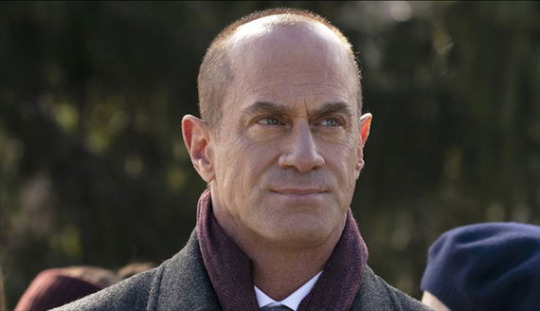
1961 – Christopher Meloni is an American actor. He is known for his television roles as NYPD Detective Elliot Stabler on the NBC legal drama Law & Order: Special Victims Unit for its first 12 seasons and its spin-off Law & Order: Organized Crime, and as inmate Chris Keller on the HBO prison drama Oz. In June 2012, he returned to HBO as the vampire Roman on the main cast of True Blood for the series' fifth season. Meloni also starred in and executive produced the Syfy series Happy! from 2017 to 2019. His films include Man of Steel, Wet Hot American Summer, Harold & Kumar Go to White Castle, 12 Monkeys, Runaway Bride, 42, and Fear and Loathing in Las Vegas.
Meloni was born in Washington, D.C., the youngest of three children of Cecile (née Chagnon), a homemaker, and Charles Robert Meloni (1927–2012), an endocrinologist. His maternal ancestry is French Canadian, and he is a descendant of Matthias Farnsworth. His paternal ancestry is Italian, with roots in Velva [it],in the municipality of the town Castiglione Chiavarese, (province of Genoa, in the region of Liguria.)
Meloni worked as a construction worker prior to getting his acting break. He has also worked as a bouncer, bartender, and personal trainer. Meloni worked his way up the acting ladder with commercials, short-lived TV series, and bit parts in a number of films. His first noticeable role was the hotheaded son of a Mafia don in the 1996 thriller Bound. He appeared as Robbie Sinclair's friend Spike in Dinosaurs in the early 1990s. He played criminal Jimmy Liery in eight episodes of NYPD Blue during 1996-1997 and the fiancé of Julia Roberts's character in the 1999 romantic comedy Runaway Bride.

From 1998 to 2003, Meloni portrayed the bisexual criminal Chris Keller on the HBO series Oz with its famous nude scene.
Meloni has appeared in many public service announcements in support of lesbian, gay, bisexual, and transgender issues. In 1999, Meloni jokingly kissed Lee Tergesen (who played Tobias Beecher, Meloni's on-screen boyfriend on Oz) at an awards dinner for GLAAD. In 2006, Meloni was given the Human Rights Campaign's Equality Award, along with actor Jake Gyllenhaal and director Ang Lee, for his work on behalf of LGBT issues. In addition, in 2011, Meloni appeared in the Human Rights Campaign's "New Yorkers for Marriage Equality" video. Meloni was included in the 2006 edition of People magazine's Sexiest Men Alive.

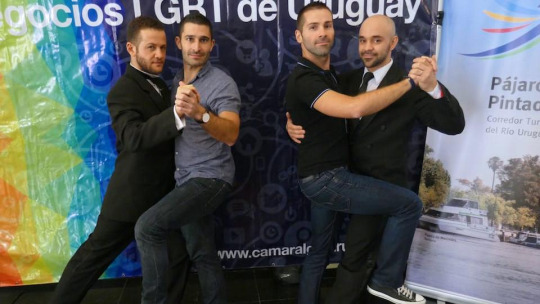
2013 – Uruguay senate approves same-sex marriage by a vote of 23-8, becoming the fourteenth country in the world to legalize marriage equality.


16 notes
·
View notes
Text
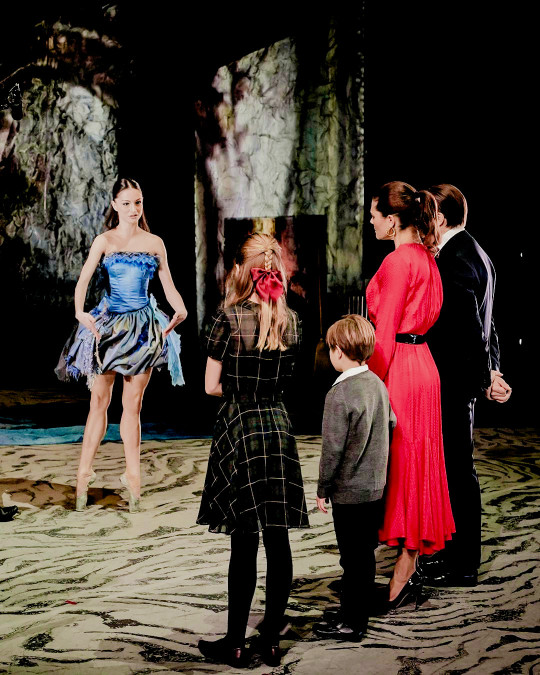

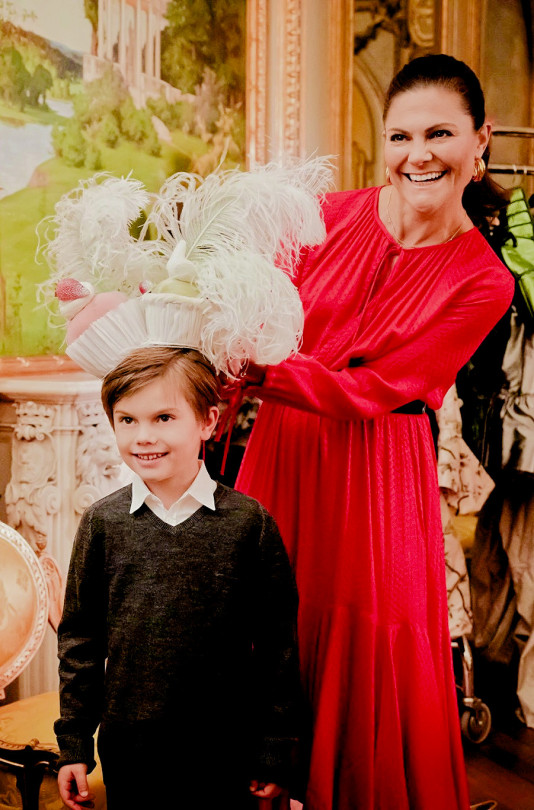
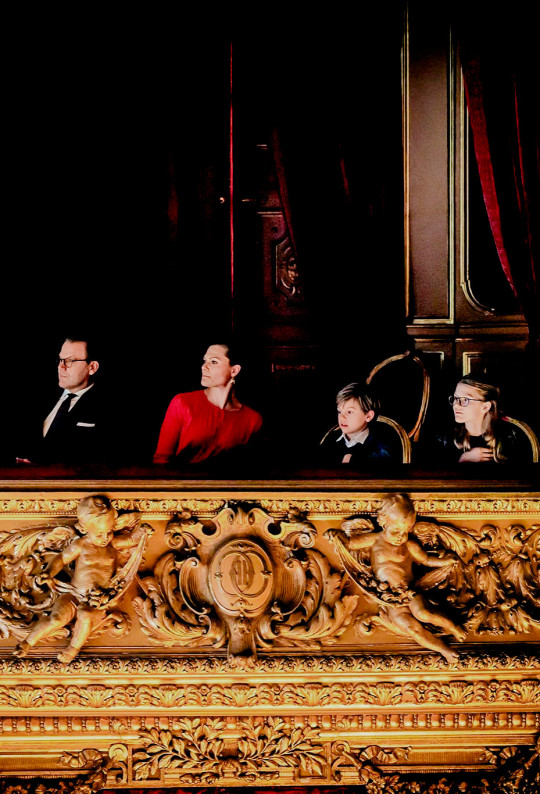
Crown Princess Victoria of Sweden, Prince Daniel of Sweden, Princess Estelle of Sweden and Prince Oscar of Sweden visit the Royal Opera to watch a performance of the ballet “Cinderella”, in Stockholm, Sweden -December 19th 2022.
📷 : Sören Vilks/Kungliga Operan.
#crown princess victoria#prince daniel#princess estelle#prince oscar#swedish royal family#sweden#2022#december 2022#royal opera#royal opera stockholm#cinderella#royal children#my edit
26 notes
·
View notes